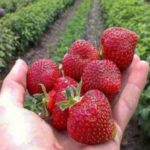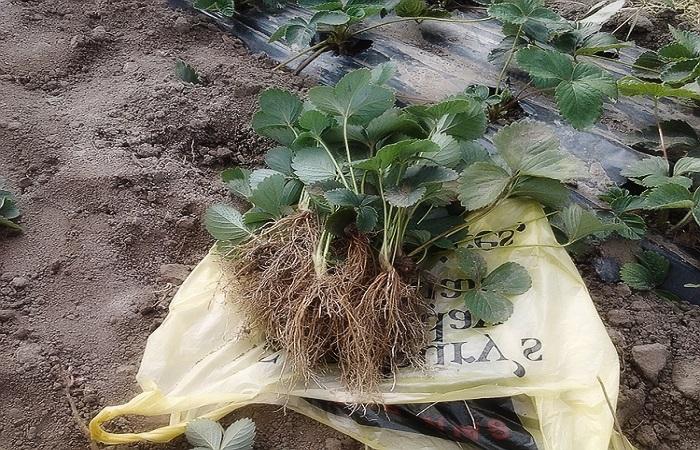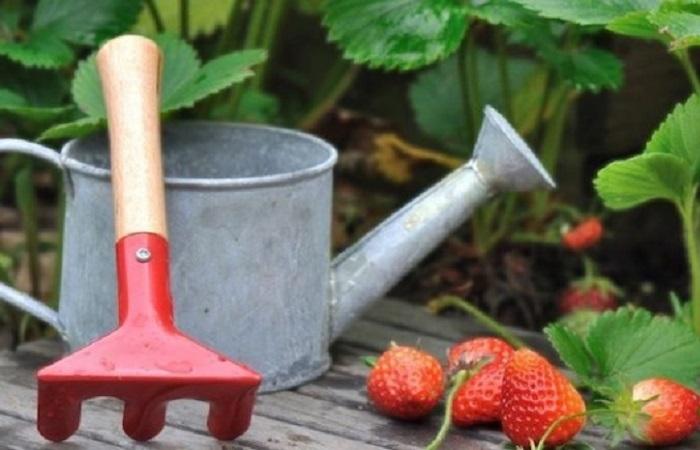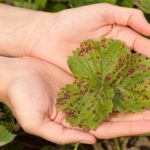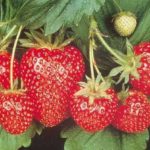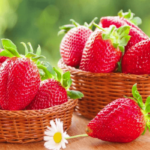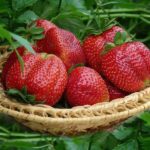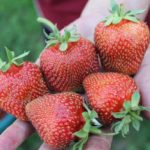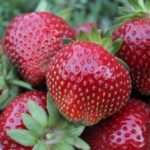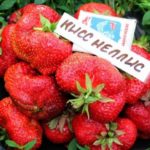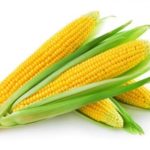The strawberry variety Lakomka was bred in 2000. The variety produces large, tasty berries; its distinctive feature is its dark pink flowers. Let's consider the description and characteristics of the variety, advantages and disadvantages, features of planting and care, protection from pests and diseases, how to properly propagate strawberries in the garden, when and how to pick berries.
Description and characteristics
The Lakomka variety is remontant and already in the first season after planting it can produce berries weighing 35 g.The next largest fruits will be smaller - about 15 g. Strawberries are universally used, that is, they are suitable for food and processing. The bushes are powerful, but compact, with dense foliage. Peduncles rise to the level of foliage, strong, stable.
The berries have a classic round-conical shape, with an unpronounced neck, deep red color, shiny. The dense pulp is uniformly red, sweet and sour, juicy.
Pros and cons of the Lakomka strawberry variety
The advantages of the Lakomka variety are expressed in:
- cold resistance;
- productivity;
- resistance to fungal infections, in particular Verticillium wilt;
- good transportability of berries;
- longevity of bushes, in one place plants can grow and bear fruit for up to 10 years;
- bright colors of flowers;
- You can grow strawberries not only in the garden, but also in flowerpots on the balcony.
Disadvantages of the variety: shredding of berries with insufficient care.
Features of cultivation and care
The Lakomka variety is large-fruited in terms of breeding potential, but it will be possible to collect large berries from plants only when they receive proper care and nutrition.
Site selection and soil preparation
Strawberry Gourmand grows best on a well-fertilized substrate, loose, soft, neutral reaction. The site should be located on level ground, without flooding; the crop does not like soil that is too damp. Strawberries should not be disturbed by the wind, so it is best to choose an area under the shelter of a fence or building.
Pollination
In open ground, pollination of the Gourmand strawberry occurs naturally; additional pollination of the flowers is not required. But, if cultivation is carried out in greenhouses, on balconies, to increase productivity, it is necessary to pollinate the opening flowers artificially - with a brush.
Fertilizers and watering
This variety requires moderate watering; both a lack of moisture and an excess are harmful. After watering or precipitation, loosening is required to destroy the resulting crust and, at the same time, remove weeds that have begun to sprout. You can make caring for plants easier by covering the soil with film or agrofibre and using a drip system for watering. The water temperature should be moderate; it is not advisable to use cold water.
Strawberries respond well to fertilizing with complex fertilizers for fruit and berry crops, which can be used all season long.
Trimming
Strawberry pruning consists of removing old leaves and flower stalks.It is carried out at the end of the season, before covering the plants for the winter. All drying, diseased and damaged leaves should be cut off to prevent pests and infection from persisting on them.
Frost resistance and the need for shelter
After pruning, the plants need to be covered with mulch for the winter. The layer should cover the bushes completely. You can use straw, hay, sawdust, pine needles, and tree leaves. Instead of natural materials, it is permissible to lay agrofibre on top.
Diseases and pests
To prevent the berries from being affected by rot, you need to preventively spray them with fungicide solutions. You should choose from those drugs that have a short waiting period, so that after processing you do not have to wait until the fruits become suitable for consumption.
Features of reproduction
The gourmand reproduces by mustaches and seedlings. You can also use the method of dividing the bush - in spring or autumn. For division, choose bushes no older than 5 years of age, healthy and the most productive. Divide so that each part contains roots, at least 2 leaves and an apical bud.
Root the tendrils near plants during the season; for propagation you can use tendrils of 1-2 orders. They are transferred to a new bed in the fall or next spring.
Harvest and storage
The variety is remontant; flowering and fruiting on healthy plants do not stop all summer. Gourmand berries are collected as they ripen; a sign of ripeness is that the fruit acquires a red color and a characteristic aroma for the culture. Only dry, clean, unpressed berries should be left for storage. Store refrigerated in small food containers. Overripe and substandard fruits are best processed into blanks.
Strawberry Gourmet can please the gardener not only with a conveyor belt of delicious berries, but also with beautiful dark pink flowers. According to all characteristics, the variety is considered suitable for cultivation on private farms. It is remontant, productive, unpretentious, resistant to not always favorable conditions. One of the advantages of the variety is the ability of strawberries to reproduce by seeds without the seedlings losing the characteristics inherent to the variety.


